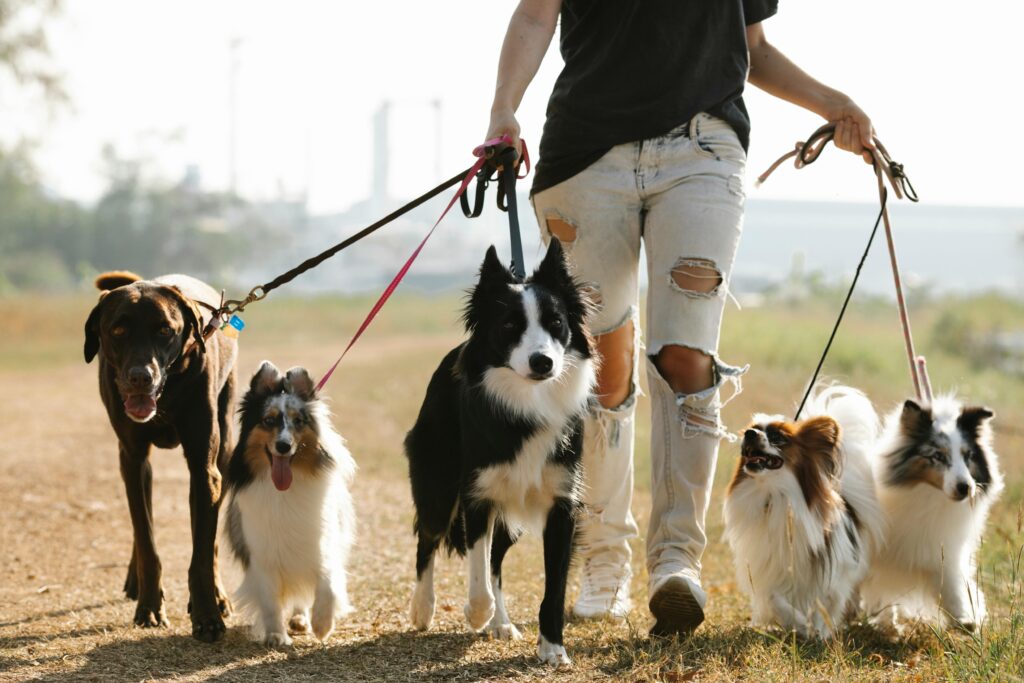An intact female dog will eventually be ready to breed. This is known as “being in heat.” Heat, also known as estrus or season, is characterized by different physical and behavioral symptoms.
Many estrus parameters, including frequency, duration, and severity, are determined by your dog’s age and breed. Your dog may have symptoms that are specific to them.
Some breeders don’t breed a dog during her first or second heat. It is considered best practice to wait until her third heat, which occurs between 18 and 24 months.
This piece answers the question, “At what age do female dogs go into heat?” and other things you need to know.
At What Age Do Female Dogs Go into Heat?

Dogs can have their first heat at the age of 6 months or 24 months. Even though dogs can become pregnant during this period, it is normally not recommended because they are still not fully grown.
The timing of a dog’s first heat varies, and size is an important influence. Small dog breeds typically experience their estrus cycle at a younger age (about 6 months old), but large or giant-breed dogs may not become in heat until later (18–24 months).
Female dogs often cycle once or twice a year, rather than every month. Dogs often go into heat every seven months.
Each dog is unique, much as the length of a human menstrual cycle varies from person to person. Variations can also occur between breeds and even within the same animal’s cycle.
How Long Does the Heat Last?
The heat cycle lasts for approximately 18–21 days.
According to Alcumbrac, proestrus lasts between 2 and 11 days, whereas estrus typically lasts 3-5 days but can last up to 11 days.
The Phases of a Dog’s Heat Cycle
A female dog’s reproductive cycle, known as the estrous cycle, is divided into three distinct phases:
1. Proestrus
It marks the beginning of the heat cycle. The vulva is swollen, and there is a bloody vaginal discharge. Female dogs will not accept mating during this phase.
This period can last anywhere between a few days and four weeks. On average, it lasts seven to ten days.
2. Estrus
is frequently referred to as “heat.” This is when the female dog will allow mating to take place. This phase of the cycle lasts anywhere from three to 21 days, with an average of nine days.
3. Anestrus
It is defined as the period when cycling stops. This phase normally lasts four to five months with no indications.
How Do Male Dogs Know When a Female Dog is in Heat?
When a female dog is in heat, her vaginal and urine secretions contain different pheromones than when she is not in heat.
Male canines have a high sense of smell, which can detect these pheromones.
Is Your Dog in Heat? How to Know
Humans cannot detect dog pheromones, but there are several more solid techniques to identify if your dog is in heat. These include:
- Physical changes may include continuing enlargement of the vulva, bloody discharge, or even a change in color (typically to a straw-like tone). When you apply pressure to your dog’s lower back, she may arch her body and move her tail sideways.
- Behavioral changes: Female dogs frequently initiate courtship-like behavior, which may involve releasing pheromones, vocalization, postural changes, increased physical activity, peeing in the presence of a male dog, or permitting male interest (such as sniffing or licking the vulva).
- Diagnostic testing: Vaginal cytology is a low-cost, rapid monitoring technique performed on an outpatient basis by a veterinarian. Consult with your veterinarian if you are not sure.
Active Heat Signs
The “estrus” stage occurs when your dog is in active heat and capable of being pregnant. Dr. Amy Attas, a veterinarian and founder of City Pets, says the following indications may appear during estrus:
- Less discharge, lighter/pinkish
- Less swollen vulva
- More responsive and friendly toward male dogs.
- Increased vocalization, particularly moaning, wailing, yowling, and sobbing.
- Increased hostility against female dogs
- Restless or anxious behavior
- Peeing more frequently than usual
- Increased desire and attention from male dogs
- “Flagging” – raising her rear toward male dogs or moving her tail to the side.
Female dogs are also known to urinate in small amounts on various things in the house or outside while in heat. This is because, during estrus, female dogs’ urine contains pheromones and hormones that convey their reproductive status to male dogs.
What Should I Do When My Female Dog Is On Heat?
During the heat, your dog may require some extra care. Her hormone levels can fluctuate dramatically, affecting both her physical and behavioral well-being. As a result, it is best to pay close attention to her and provide her with comfort.
To look after your dog during the heat, you can:
- Take her for frequent short walks. She may need to pee more frequently while in heat, and modest activity might help her release pent-up tenseness or angry energy.
- Consider going for walks in the early morning or late evening, when there is less dog traffic in your neighborhood. Never force your dog to go on a walk if she appears exhausted; instead, let her rest.
- Provide her with chew-resistant toys to keep her entertained and relieve stress.
- Avoid punishing or condemning your dog for any mess caused by bloody discharge. Speak in a soft, reassuring tone.
- Make sure your dog drinks lots of water and eats properly.
- If you have numerous dogs, make sure she gets her food, drink, and bed to prevent fighting.
- Make time to pet, massage, and brush her coat; all of these activities can be relaxing.
- Give her plenty of room and let her initiate cuddling and interactions.
- If you use dog diapers, try changing them every three to four hours to avoid skin irritation and urinary tract infections.
- Keeping your puppy away from unneutered male dogs is critical if you want to avoid pregnancy.
- While your dog is in heat, it is advised to avoid dog parks, group training sessions, and other activities with other dogs.
- Never let your dog go outside alone, and always keep her leashed when going for a walk. You may even want to keep your windows closed to keep male dog guests out.
Do Dogs Go Through Menopause?
Dogs do not undergo menopause. Dogs’ reproductive cycles differ from those of humans; thus, they can go into heat and become pregnant throughout their lives, even into their senior years.
However, you may notice that your dog’s cycle is less frequent or lasts longer between heats.
That is normal as dogs age. However, dogs that have stopped having cycles should be evaluated by a veterinarian, as this may indicate an underlying health condition or metabolic disease process.
But just because dogs can become pregnant as seniors does not imply they should. Litters from mature moms are typically smaller, with more puppy fatalities and labor being more difficult if carried to term.
Furthermore, female dogs older than 8 years are more likely to develop pyometra, a potentially fatal uterine infection.
Spaying Your Female Dog
Having your dog spayed as soon as possible is the best way to prevent your dog from becoming pregnant, especially if they spend a lot of time with other dogs.
The American Animal Hospital Association suggests spaying your dog before its first heat cycle.
- Between five and six months of age for breeds weighing less than 45 pounds when completely grown.
- Between 5 and 15 months for breeds that weigh more than 45 pounds when completely matured.
If you are unsure about the best time to spay your dog, visit your veterinarian.
Benefits of Spaying
Unless you have a special plan for puppies, spaying your dog is the most effective strategy to minimize future unnecessary premature dog deaths.
According to experts, spaying your dog might have a variety of health benefits. Also, spayed female dogs have a greater life expectancy than unspayed dogs.
Spaying your dog minimizes her risk of developing breast cancer and pyometra; (a potentially fatal uterine infection caused by hormonal changes in the reproductive tract).
Breast cancer is the most common tumor found in unspayed female dogs. Approximately 50% of mammary gland tumors in dogs are malignant.
However, spaying your dog reduces hormone production, which can contribute to the growth of mammary gland tumors.
That is why dogs spayed before their first heat have a 0.5% chance of acquiring mammary cancer.
This risk increases to 8% if they are spayed between the first and second heat cycles, and to 25% if they are spayed after the second heat.
Also, spaying your dog can lessen the following behavioral problems:
- Aggression
- Roaming
- Excessive vocalization
- Urine marking
Conclusion
Every unspayed female dog goes into heat, which is why this piece answers the question, “At what age do female dogs go into heat?”
If you can identify the early warning signs, you have a higher chance of preventing your dog from becoming pregnant.
While you observe symptoms of heat, you can limit the likelihood of an unwanted pregnancy. In addition to keeping your dog from becoming pregnant, you’ll want to make sure she’s comfortable.




